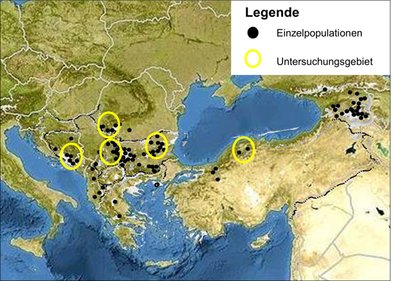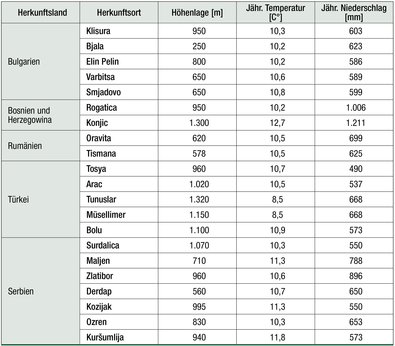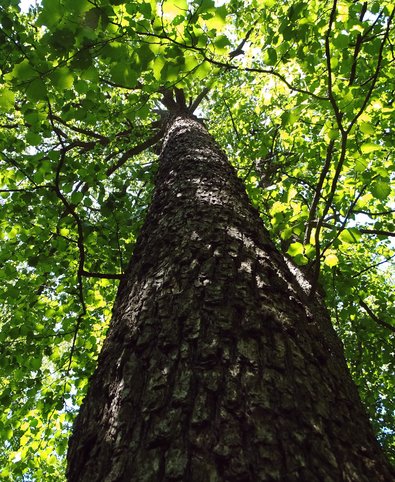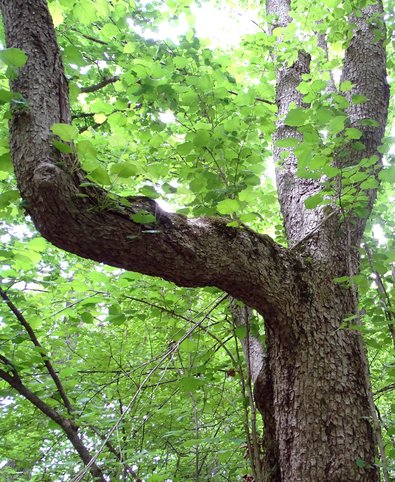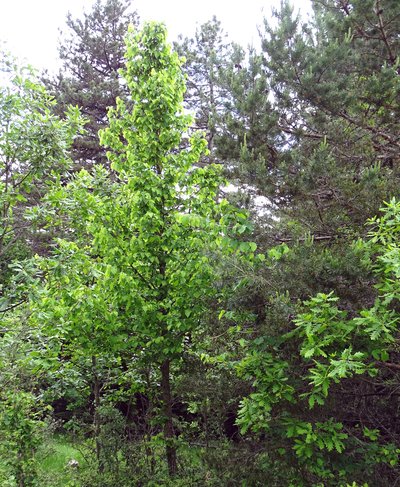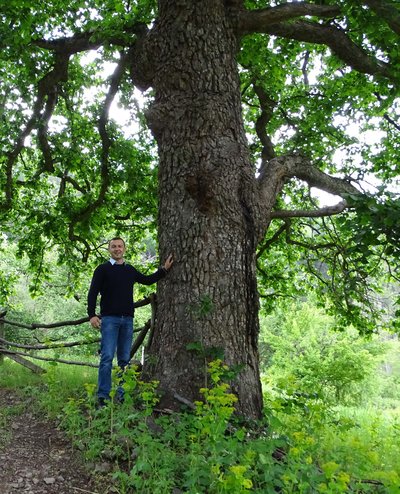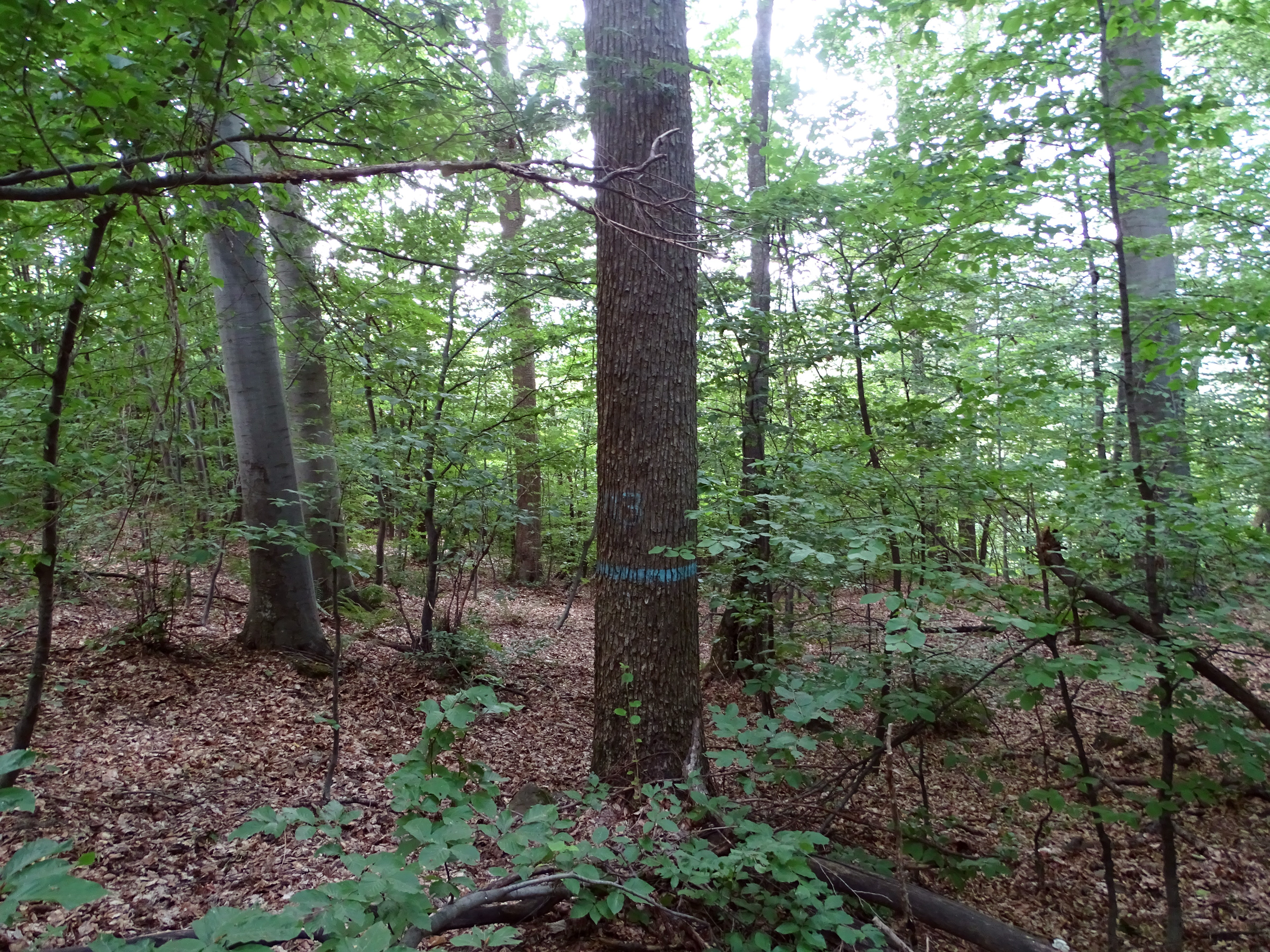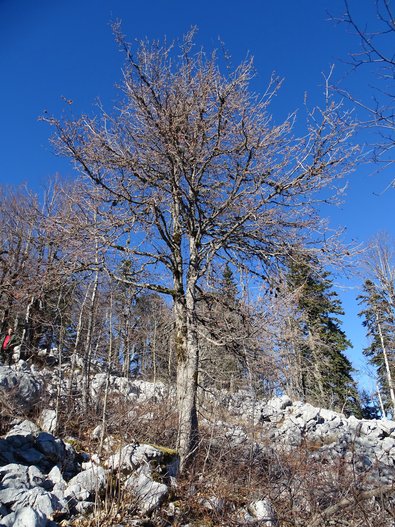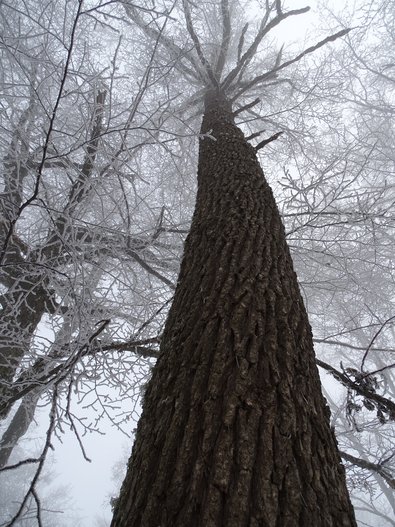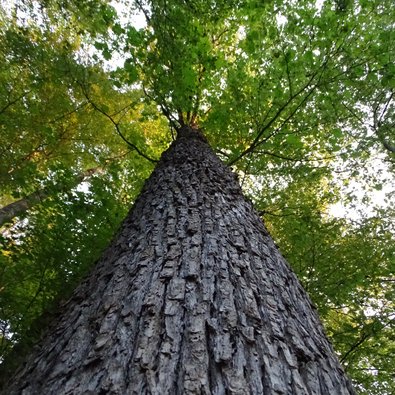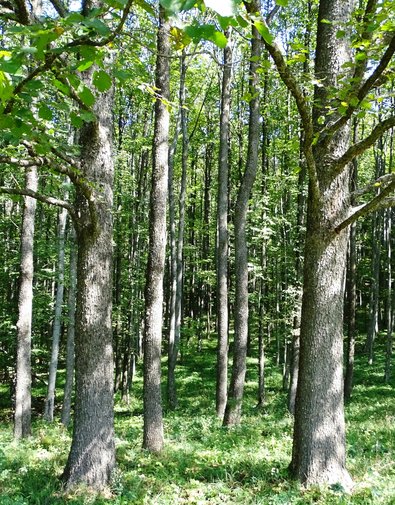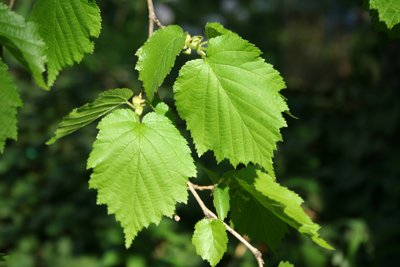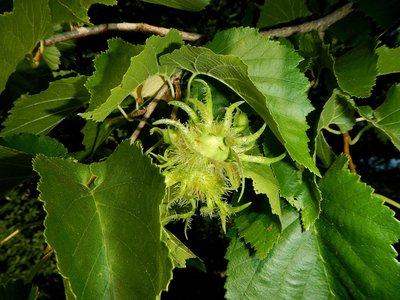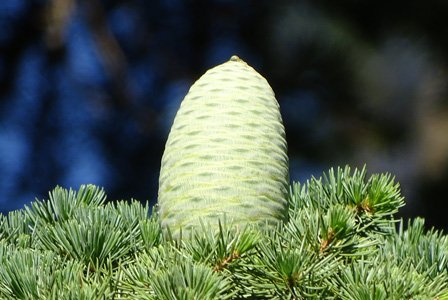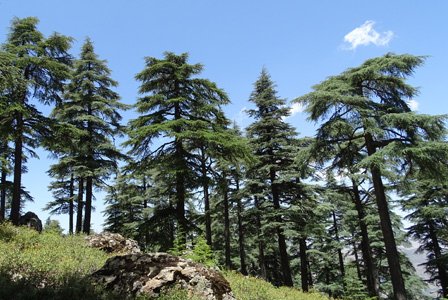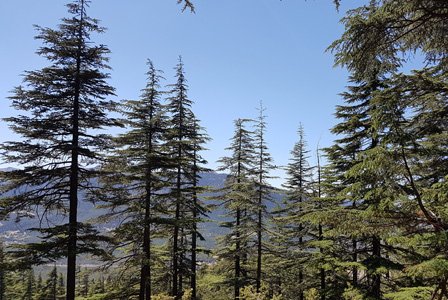Forestry practitioners started testing possible alternative tree species some time ago. As with native tree species, some responsibility also lies with the companies offering seed and planting material. They need to bring high-quality planting material of certain provenance to market. One good example of this is the Douglas fir, seen as a beacon of hope in times of climate change, and which has been cultivated in Germany for over 100 years. With this tree species, the question of provenance was addressed quite early on, as this was crucial for its growth performance and susceptibility to infestation with Swiss needlecast (Phaeocryptopus gaeumannii).
To help forest owners avoid potentially costly negative experiences, the “CorCed” project aims to create a scientific basis for assessing the suitability of provenances of Turkish hazel, Atlas cedar and Lebanon cedar for cultivation in Germany. All tree species studied in the project have characteristics such as the ability to integrate easily in forest communities, low invasion potential, and high resistance to abiotic and biotic damage. They are undemanding in terms of their soil requirements, and tolerant of drought. These characteristics are becoming more and more important as a result of climate change, and can help stabilise forest stands and simultaneously increase their adaptability.
The project focuses on the following main areas:
- The establishment of contacts with responsible institutions, authorities and seed producers in the natural range of the species,
- The selection of phenotypically suitable crop stands in the natural range,
- The documentation and genetic characterisation of the propagation material,
- The carrying out of controlled harvests,
- The review of import regulations and legal requirements.
The establishment of contact with seed producers and traders as well as the relevant ministries in the countries of origin should facilitate access to seed resources. This in turn means that high quality seed of certain provenance can be offered on the market at acceptable prices. So far, only a few German businesses have contacts in individual countries of origin through whom they can obtain the relevant seed.
Visit to the Turkish hazel seed harvest stands
This paper presents possible seed crop stands of Turkish hazel in the countries of origin in south-eastern Europe and Turkey. Visits were made to a total of 21 stands in 5 countries (Figs. 1 and 2), and a comprehensive evaluation was made. Due to the rarity of the Turkish hazel in the countries of origin, it was difficult to find larger stands with good silvicultural properties.
Romania
The occurrence of the Turkish hazel in Romania is limited to the southern Carpathian arc. The stand pattern in the Nera Gorge-Beusnita National Park (Oravita) is mainly one of mixed beech-Turkish hazel stands. The Turkish hazel is mixed in singly or in groups and its share is around 10 %. The Turkish hazel stand is of high quality, and the trees reach heights of up to 30 m.
The second area of occurrence, Tismana, is part of Romania’s national catalogue of genetic resources. The phenotypic characteristics of the trees here (cf. Fig. 3, right) mean that the stand is less suitable for forestry use, however. In the interests of genetic conservation, it is nevertheless worthy of preservation and should be protected.
Turkey
Visits were made to a total of six seed crop stands in northern Turkey (western Pontic Mountains). In contrast to the other populations in its natural range, the Turkish hazel population here often occurs in open areas. This is an indication that there has been traditional use of the nuts of the Turkish hazel. The areas are often like meadows, and are almost always grazed. Individual trees can also be found at the edge of the forest. The emergence of natural regeneration is very limited as a result of the grazing and only occurs in small pockets. The young trees have well-shaped trunks, however, and have obvious potential.
In the first two stands in Agli and Müsellimler (Fig. 4), we observed a similar picture. The Turkish hazel occurs here in the transitional areas between forest and meadows. The dominant trees on the stand are mainly mature trees. The main tree species are the Turkish or Black Sea fir (Abies bornmuelleriana) and black pine (Pinus nigra). The natural regeneration also develops excellent trunk shapes.
The largest Turkish hazel populations in Turkey are in Arac and Bolu. In Arac there are a total of around 200 trees from which seed can be harvested. These are single trees occurring on agricultural land. The young trees are also of good quality. The trees here produce fruit relatively early, at around 15 years old. The population consists of single trees up to 300 years old (Fig. 5). A similar picture is emerging in Bolu. Here attention has already turned to the Turkish hazel, and seeds are collected every year. This seed is available in Germany and can be ordered via the seed trade. According to information from Prof. Sezgin Ayan (Faculty of Forestry in Kastamonu), these are former forest areas.
Bulgaria
A large proportion of the Bulgarian Turkish hazel stands are of good quality and should be considered as possible seed crop stands. During the course of the visits, a total of five Turkish hazel stands were described. The stand in Elin Pelin (east of Sofia) has good trunk shapes and is suitable as a seed source. It was agreed that harvesting for the provenance trial in the “CorCed” project could take place.
The second stand in Bjala is made up of single trees occurring in mixed groups with other species (coppice). A case of pest infestation of the nuts has been reported here. This needs investigating before seed is harvested here. The stand in Varbitza (Fig. 6) is characterised by good trunk forms and can be recommended for harvesting without reservation. The Smjadovo seed crop stand was assessed by Dr. Petkova (Sofia Forestry University). On the last day of the trip, a visit was made to the stand in Rosino. This stand is located at an altitude of over 1,000 m above sea level and has trunks of only average quality.
Bosnia and Herzegovina
In Bosnia, two stands of Turkish hazel were inspected and described. The two stands are located in two climatically different regions of Bosnia and Herzegovina. The Turkish hazel stand in Konjic (Fig. 7, left) is in the transitional area between the continental and Mediterranean climates, and at the same time on the western edge of the natural range. Near the Bosnian town of Rogatica, what is probably the oldest Turkish hazel in the entire study area is also to be found. According to earlier descriptions, this Turkish hazel is over 400 years old.
Serbia
We visited and evaluated the Turkish hazel populations of Serbia together with the Turkish hazel expert Mr. Vlado Cokesa. Serbia is the country with the biggest Turkish hazel population. There are more than 25 Turkish hazel stands here that should definitely be considered for seed collection. A total of six stands were visited and evaluated, covering all sites of Turkish hazel in Serbia and representative of the potential of this tree species.
The stand inspected in Maljen has good characteristics overall. The quality of the trunks is very good. On the second day of the trip, the stand in Zlatibor was visited. This stand has good trunk shapes and can be used as a seed source. Another stand characterised by particularly good trunk shapes was visited near Korsumlija. The special feature of this stand is that here the Turkish hazel makes up a share of 70 to 80% of the stand. This is particularly favourable for seed production, as seeds can be harvested from many trees. On the fourth day of the trip we visited a Turkish hazel population near Kozijak (on the Macedonian-Serbian border). This stand also has good phenotypic characteristics and grows at an altitude of about 955 m above sea level. It is of particular significance, as the Turkish hazel here grows on an area of more than 700 ha. In the afternoon we visited the Turkish hazel stand in Surdulica (Fig. 8). This stand was characterised by excellent trunk qualities and rated clearly above all other stands in the evaluation, so that it should definitely be used as a future seed crop stand. Individual trees have heights of up to 33 m. On the fifth day we visited the stand in Ozren.
Evaluation of the possible seed crop stocks
The characteristics of particular importance in the evaluation of the phenotype are those that help to assess the potential suitability of the trees for future timber use. In the case of Turkish hazel, it is above all the vigour and the trunk qualities (shape, self-pruning, formation of secondary branches) that indicate whether a population is suitable for the production of valuable timber. The requirements for the selection of seed crop stands should correspond to the selection criteria for our native tree species. The 22 Turkish hazel stands studied provide important insights into the potential of this tree species, which is already being tested in some forestry operations in Germany. For the first time, there is now sound knowledge about the larger populations of the Turkish hazel throughout its range, which is available for future use in Germany.
Contact with companies that carry out the harvesting and processing of the seed has already been established through the “CorCed” project. Turkish hazel produce different quantities of seed in different crop years, so that supply of seed for planting will vary. In order to be sure of obtaining high-quality seed of certain provenance, it is advisable to allow for a one-year waiting period.
Genetic characterisation of the Turkish hazel
To test the genetic methods and select suitable markers for the genetic characterisation, samples (leaves, buds) from three provenances of Turkish hazel (Turkey: Bolu; Bosnia: Rogatica, see Fig. 7, right) and common hazel (stand in Ruhpolding/Laubau) were examined at the AWG laboratory.
The markers needed for the genetic characterisation were tested and 15 suitable DNA markers were selected for the project. The results show a clear differentiation between the Corylus species. Furthermore, the analyses show that the individual provenances of Turkish hazel can also be distinguished using the selected DNA markers. In a next step, further genetic parameters are to be determined, e.g. the genetic diversity of the individual populations. The genetic make-up of these stands plays a key role in the adaptability, growth and quality of the trees.
Significance of the provenance of the propagation material used
The selection of seed crop stands plays a central role in the successful cultivation of our native tree species. The production and marketing of seed and planting material is subject to legal regulations. The classification of the areas of provenance is clearly regulated by the [German] law on forest reproductive material FoVG. In the case of non-native tree species such as the Turkish hazel on the other hand, which are not subject to forest reproductive legislation, the knowledge gained is not applied, and the selection of the planting material used is more or less random. Most of the areas established in Germany thus reflect what is available from the nurseries. The question of provenance is often not taken into account. It is more a question of which tree species are at all suitable for future cultivation. And yet experience with all tree species shows that the question of provenance is decisive when it comes to economic success. Those tree species that have a very extensive range from east to west, and that occur at different altitudes, in coastal areas and inland, are generally those species that have adapted particularly well to different environmental influences. And this issue plays an important role in forest conversion measures, as the question of seed provenance is far-reaching and has economic consequences.
In the Douglas fir example, the negative consequences of the wrong choice of provenance could be observed in a provenance-related infestation with Swiss needlecast and clear differences in growth performance. In the case of black pine, there were clear differences in growth between the individual provenances. It is very likely that these differences also occur in other non-native tree species.
The phenotypic and genotypic traits that characterise these stands should therefore be studied in detail in provenance trials in order to identify suitable provenances for Germany. The first step is to visit and carry out a professional evaluation (phenotype and genetic characterisation) of stands of possible alternative tree species, so that provenance recommendations can be made, and so that it is clear when the recommendation is made, where the desired reproductive material can be obtained. Likewise, the experiences of colleagues from the countries of origin should be taken into account in order to avoid mistakes in the cultivation of possible alternative tree species.
The systematic establishment of provenance trials plays a key role in the evaluation of the individual provenances. These should cover the environmental conditions and possible sites. The individual cultivation trials make a major contribution by covering different sites. The provenance trials should be carefully designed and set up with sufficient repetitions in order to gain a sound knowledge base useful for forestry practitioners.

